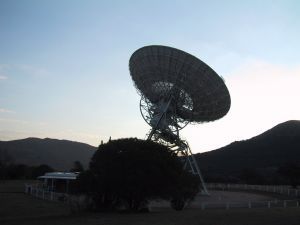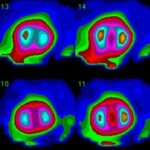Will your first “symptom” of high blood pressure be the reading on the medical instrument in the doctor’s office or the reading on the medical instrument in the emergency room?
According to the American Heart Association, a person has a measurable symptom of high blood pressure when his or her systolic pressure is at least 140 mm Hg or their diastolic pressure is at least 90 mm Hg. The measurement is done with a medical instrument called a sphygmomanometer. The unit of measurement stands for millimeter of mercury (with Hg being the chemical symbol for mercury). The systolic pressure, which measures the blood flow in the arteries when the heart is beating, is the upper number. The diastolic pressure, which measures the blood flow in the arteries when the heart is resting, is the lower number. Another name for high blood pressure is hypertension.
The American Heart Association and doctors that I have consulted, state that the ideal blood pressure measurement is less than 120 systolic mm HG and less than 80 diastolic mm Hg. Treatment varies when a patient has readings that are in between these high and low numbers. Some doctors prescribe diet modification and more exercise, with a re-check to see if the blood pressure has come down. Other doctors are more aggressive and start the patient on medication before the blood pressure symptoms reach the higher numbers. All medical sources agree that there is a risk of high blood pressure when the systolic and diastolic measurements are higher than 120 over 80 and that those symptoms should not be ignored.
High blood pressure can be either primary or secondary. A person may have secondary high blood pressure if he has another disease that causes high blood pressure. Doctors usually investigate to make sure that is not the case. The vast majority of people who have symptoms of high blood pressure have primary high blood pressure. There are several contributing factors to primary high blood pressure. Symptoms of high blood pressure are more common in people who are over 35 yrs old. African Americans are more prone to high blood pressure. People who have diabetes, gout or kidney disease are more prone to have symptoms of high blood pressure. Others who are at greater risk for high blood pressure symptoms include heavy drinkers, women who take birth control pills, smokers and those who are obese. One of the main contributing factors to primary high blood pressure is a history of close family members who have had symptoms of high blood pressure and heart or stroke conditions.
I have known that I have high blood pressure and have taken blood pressure medication for about thirty-five years. I was first diagnosed with primary high blood pressure and prescribed blood pressure medication when I was approximately twenty-five years old. My late father had high blood pressure and eventually had heart by-pass surgery. Although, he had several heart attacks many years after his by-pass surgery, he was able to live several decades and a full life in between. His high blood pressure symptoms were not discovered as early in life as mine were. I believe that because of early treatment for high blood pressure symptoms and cholesterol issues, I will have better health than my father and no reason for by-pass surgery.
The American Heart Association emphasizes that high blood pressure has no physical symptoms. The high reading on the sphygmomanometer in the doctor’s office should be the first symptom of high blood pressure. My father did fit part of that profile; he had not had physical symptoms and did not know that he had high blood pressure. His first symptom of high blood pressure was the high reading on the sphygmomanometer in the emergency room after he had a major heart attack. That is why high blood pressure is called the “silent killer”. The best way to know if you have symptoms of high blood pressure is to visit your doctor yearly and get tested for high blood pressure.
Some sources state that people who have high blood pressure may have physical symptoms such as headaches, blurred vision, nausea, and dizziness. Before I was diagnosed, I experienced headaches and blurred vision that may have been vague symptoms of high blood pressure. I have occasionally had those symptoms over the years, and sometimes have found at my next doctor’s appointment that I needed to increase the dosage of my medication or change to a different blood pressure medication. However, symptoms such as these can be from any number of causes. It is critical that people even younger than 35 yrs old get tested yearly instead of waiting until they have physical symptoms of high blood pressure.
For those people who choose to wait until they have physical symptoms of high blood pressure before getting tested, their first “symptom” may be a stroke or a heart attack.
Source:
American Heart Association
www.americanheart.org/presenter.jhtml?identifier=468



